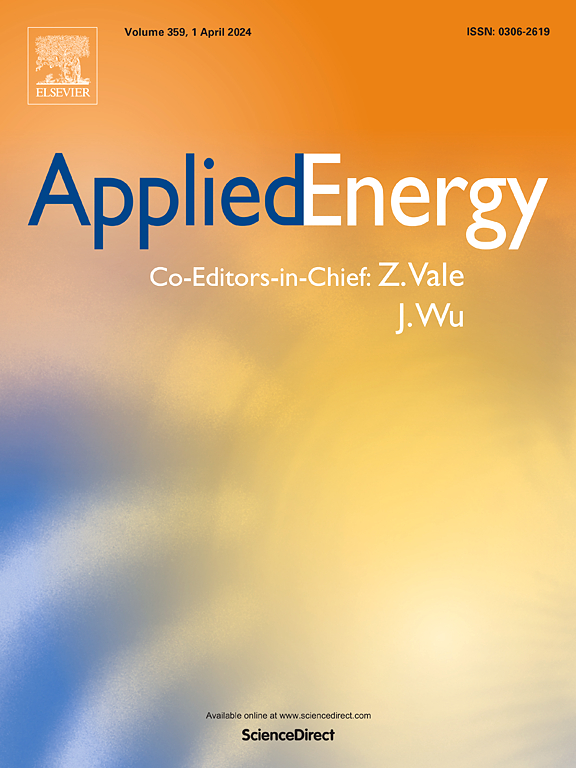Insights into energy efficiency for vanadium redox flow battery (VRFB) using the artificial intelligence technique
IF 11
1区 工程技术
Q1 ENERGY & FUELS
引用次数: 0
Abstract
Vanadium redox flow battery (VRFB) offers a sustainable and reliable solution for large-scale energy storage applications. This study represents the first investigation into the comprehensive data-driven analysis of inter-parameter correlation and prediction of the energy efficiency of VRFBs utilizing the Gaussian Process Regression (GPR) model. Namely, 420 VRFB datasets were collected from the literature, whereas 10 structural and 2 operational features are considered input parameters. Indeed, in the VRFB cells with the greater active area, i.e., pilot-to-commercial-scale applications, the Serpentine flow field configuration, higher electrolyte concentration, thicker electrodes, and higher felt compression are more prevalent. The outcomes reveal that the current density, membrane type, and electrode treatment with the respective Pearson correlation coefficient values of −0.4167, 0.2862, and 0.1546 significantly affect the VRFBs' energy efficiency. Besides, the developed ML models can accurately result in the associated energy efficiency in the VRFBs, with the highest accuracy of the GPR- Matern5/2. The training and testing R2 values are 0.9933 and 0.9565, respectively, indicating near-perfect accuracy, making it a reliable model. This research paves the way for improving VRFB performance, advancing its practical application, and providing key insights into AI-driven battery design.

利用人工智能技术研究钒氧化还原液流电池(VRFB)的能源效率
钒氧化还原液流电池(VRFB)为大规模储能应用提供了一种可持续、可靠的解决方案。本研究首次利用高斯过程回归(GPR)模型对vrfb的参数间相关性和能效预测进行了全面的数据驱动分析。也就是说,从文献中收集了420个VRFB数据集,其中10个结构特征和2个操作特征被视为输入参数。事实上,在具有更大活性面积的VRFB电池中,即从试验到商业规模的应用,蛇形流场配置、更高的电解质浓度、更厚的电极和更高的毡压更为普遍。结果表明,电流密度、膜类型和电极处理对VRFBs的能效有显著影响,其Pearson相关系数分别为- 0.4167、0.2862和0.1546。此外,所开发的ML模型可以准确地计算出vrfb的相关能源效率,其中GPR- mater5 /2的准确性最高。训练和检验的R2值分别为0.9933和0.9565,精度接近完美,是一个可靠的模型。这项研究为提高VRFB性能、推进其实际应用铺平了道路,并为人工智能驱动的电池设计提供了关键见解。
本文章由计算机程序翻译,如有差异,请以英文原文为准。
求助全文
约1分钟内获得全文
求助全文
来源期刊

Applied Energy
工程技术-工程:化工
CiteScore
21.20
自引率
10.70%
发文量
1830
审稿时长
41 days
期刊介绍:
Applied Energy serves as a platform for sharing innovations, research, development, and demonstrations in energy conversion, conservation, and sustainable energy systems. The journal covers topics such as optimal energy resource use, environmental pollutant mitigation, and energy process analysis. It welcomes original papers, review articles, technical notes, and letters to the editor. Authors are encouraged to submit manuscripts that bridge the gap between research, development, and implementation. The journal addresses a wide spectrum of topics, including fossil and renewable energy technologies, energy economics, and environmental impacts. Applied Energy also explores modeling and forecasting, conservation strategies, and the social and economic implications of energy policies, including climate change mitigation. It is complemented by the open-access journal Advances in Applied Energy.
 求助内容:
求助内容: 应助结果提醒方式:
应助结果提醒方式:


